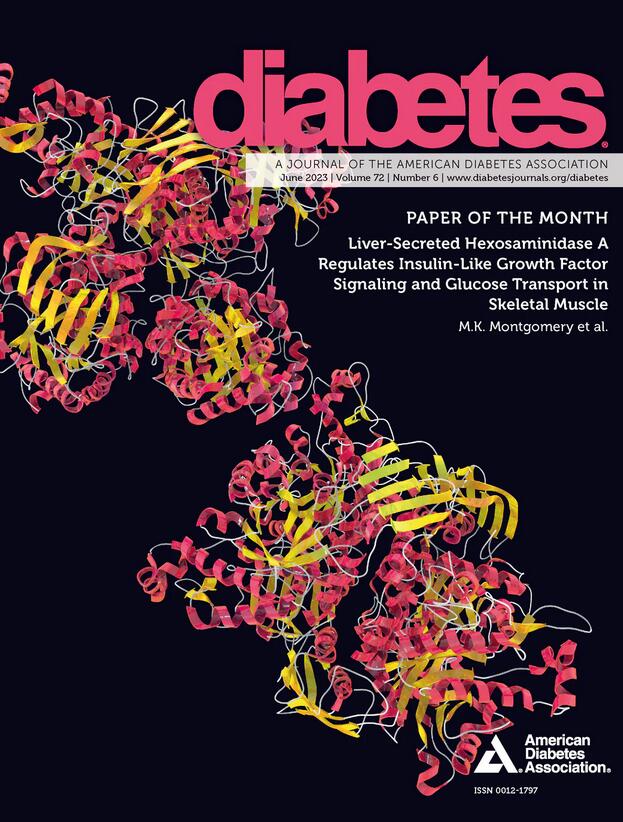3D Imaging Resolves Human Pancreatic Duct-β-Cell Clusters During Cystic Change
IF 6.2
1区 医学
Q1 ENDOCRINOLOGY & METABOLISM
引用次数: 0
Abstract
Pancreatic cystic changes in adults are increasingly identified through advanced cross-sectional imaging. However, the impact of initial/intra-lobular epithelial remodeling on the local β-cell population remains unclear. In this study, we examined 10 human cadaveric donor pancreases (tail and body regions) via integration of stereomicroscopy, clinical H&E histology, and 3D immunohistochemistry, identifying 36 microcysts (size: 1.22±0.56 mm) alongside 54 low-grade pancreatic intraepithelial neoplasias (positive control of epithelial remodeling; size: 2.42±1.05 mm). Both conditions exhibited significant increases in CK7 and insulin immunoreactive signals compared with normal lobules. Importantly, despite luminal contents of microcysts causing false positives (autofluorescence) in fluorescence imaging, the defined cystic epithelium showed distinct duct-β-cell associations—including β-cells in the epithelium and duct-β-cell clusters—visualized via antifade 3D/Airyscan super-resolution imaging in the high-refractive-index polymer. The peri-luminal β-cells displayed insulin+ vesicles residing near the basal domain, while the CK7+ cytokeratins in duct cells accumulated in the apical domain, underlining polarized tissue and cellular organizations. Overall, in microcyst formation, we demonstrate local and associated pancreatic exocrine and endocrine tissue remodeling. Because artifacts are a concern in β-cell investigation in a novel environment, our work using 3D-labeled human pancreas with cytokeratin and vesicle resolving powers provides a robust approach for characterizing the duct-β-cell association in a clinically relevant setting.三维成像解析囊变过程中人类胰管β细胞簇
成人胰腺囊性改变越来越多地通过先进的横断面成像来识别。然而,初始/小叶内上皮重塑对局部β细胞群的影响尚不清楚。在这项研究中,我们通过体视显微镜、临床H&;E组织学和3D免疫组织化学检查了10个人尸体供体胰腺(尾巴和身体区域),鉴定出36个微囊肿(大小:1.22±0.56 mm)和54个低级别胰腺上皮内肿瘤(上皮重塑阳性对照;尺寸:2.42±1.05 mm)。与正常小叶相比,这两种情况都表现出CK7和胰岛素免疫反应信号的显著增加。重要的是,尽管微囊的腔内内容物在荧光成像中引起假阳性(自身荧光),但通过高折射率聚合物的抗褪3D/Airyscan超分辨率成像,明确的囊性上皮显示出明显的导管-β-细胞关联,包括上皮中的β-细胞和导管-β-细胞团。管腔周围β-细胞显示胰岛素+囊泡位于基底域附近,而导管细胞中的CK7+细胞角蛋白积聚在顶域,强调极化组织和细胞组织。总之,在微囊肿形成过程中,我们发现了局部和相关的胰腺外分泌和内分泌组织重塑。由于伪影是在新环境中β细胞研究中的一个问题,我们使用具有细胞角蛋白和囊泡分辨力的3d标记人类胰腺的工作为在临床相关环境中表征导管-β-细胞关联提供了一种强大的方法。
本文章由计算机程序翻译,如有差异,请以英文原文为准。
求助全文
约1分钟内获得全文
求助全文
来源期刊

Diabetes
医学-内分泌学与代谢
CiteScore
12.50
自引率
2.60%
发文量
1968
审稿时长
1 months
期刊介绍:
Diabetes is a scientific journal that publishes original research exploring the physiological and pathophysiological aspects of diabetes mellitus. We encourage submissions of manuscripts pertaining to laboratory, animal, or human research, covering a wide range of topics. Our primary focus is on investigative reports investigating various aspects such as the development and progression of diabetes, along with its associated complications. We also welcome studies delving into normal and pathological pancreatic islet function and intermediary metabolism, as well as exploring the mechanisms of drug and hormone action from a pharmacological perspective. Additionally, we encourage submissions that delve into the biochemical and molecular aspects of both normal and abnormal biological processes.
However, it is important to note that we do not publish studies relating to diabetes education or the application of accepted therapeutic and diagnostic approaches to patients with diabetes mellitus. Our aim is to provide a platform for research that contributes to advancing our understanding of the underlying mechanisms and processes of diabetes.
 求助内容:
求助内容: 应助结果提醒方式:
应助结果提醒方式:


